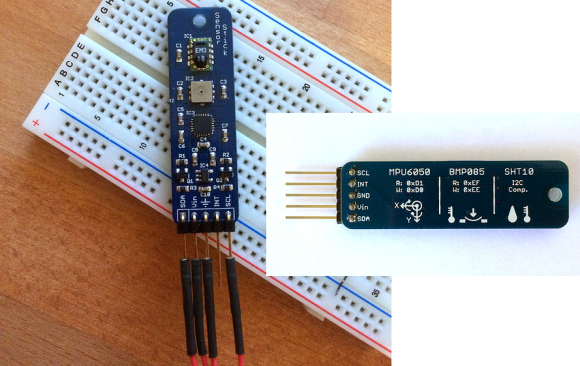
If you follow [Ioannis’] lead you’re going to thank yourself every time you sit down to work on a new prototype. He took all of the sensors which he most commonly uses and spun one dev board to host them all.
As long as you’re willing to wait for delivery, the cost of small-run professionally made PCBs has become unbelievably reasonable. That’s really nice when you need to test your layout before exploring larger production. But it also means you can develop your own dirt-cheap yet reliable dev tools. This example combines three sensors which all communicate via I2C:
- MPU6050 accelermoter/gyro
- BMP085 pressure sensor
- SHT10 humidity sensor
Obviously this is a great idea, but key is the cheat sheet which [Ioannis] included on the bottom of the board. It testifies as to which chips are on the board, but also includes the device addresses for the data bus. We’ve adopted the mantra that if a breadboarded prototype is not working, it’s always a hardware problem. For those oft-used parts this should alleviate some of the heartache at your bench.
You could still make something like this without spinning or etching a board. You’ll just have to be creative with the soldering.














Nice idea, he should sell these!
Maybe also add some sort of memory on there, would be handy for low power dataloggers etc.
@BotherSaidPooh have a look here if you are interested for a module: http://embeddedday.com/surplus/
Actually your idea about memory is great!!!
I’ve heard that rubbing MEMS aceelerometers with toilet paper completly messes up the readings.
Static maybe? Interesting observation.
I also noticed that BMP085’s are sensitive to light, this is a known issue which is why on most PCBs the sensors are covered with a little cap with a side port.
good thing i noticed this before using them for anything vital as the error can be as much as 20% under certain conditions.